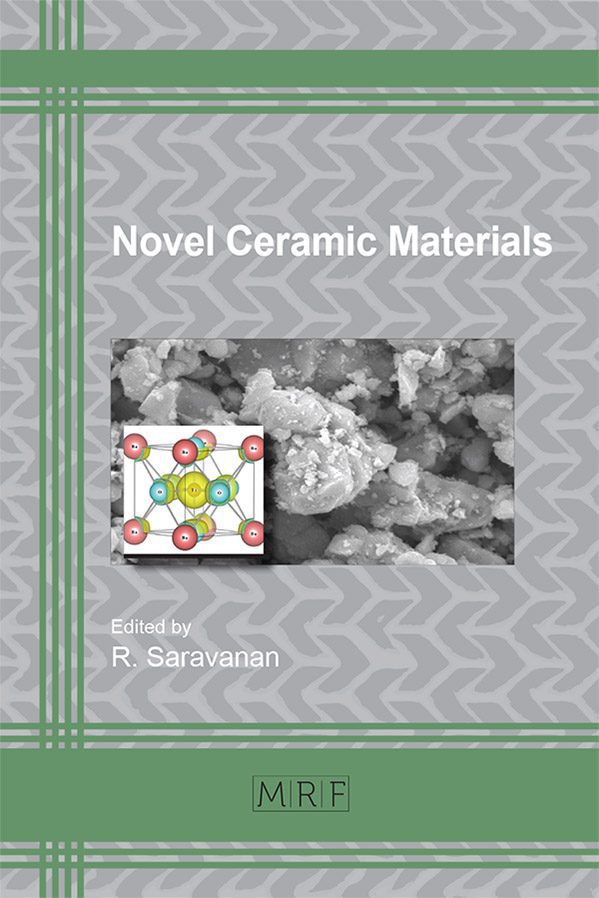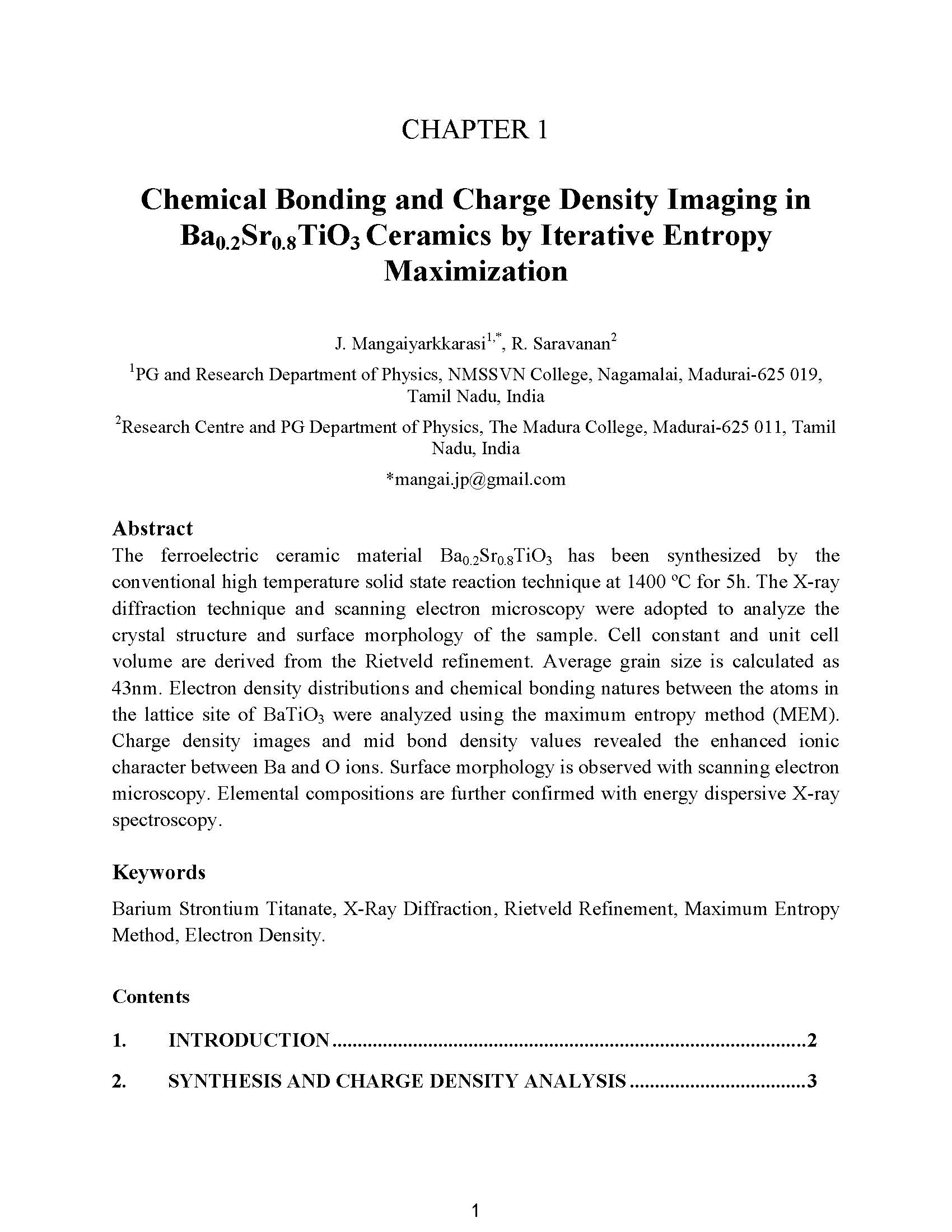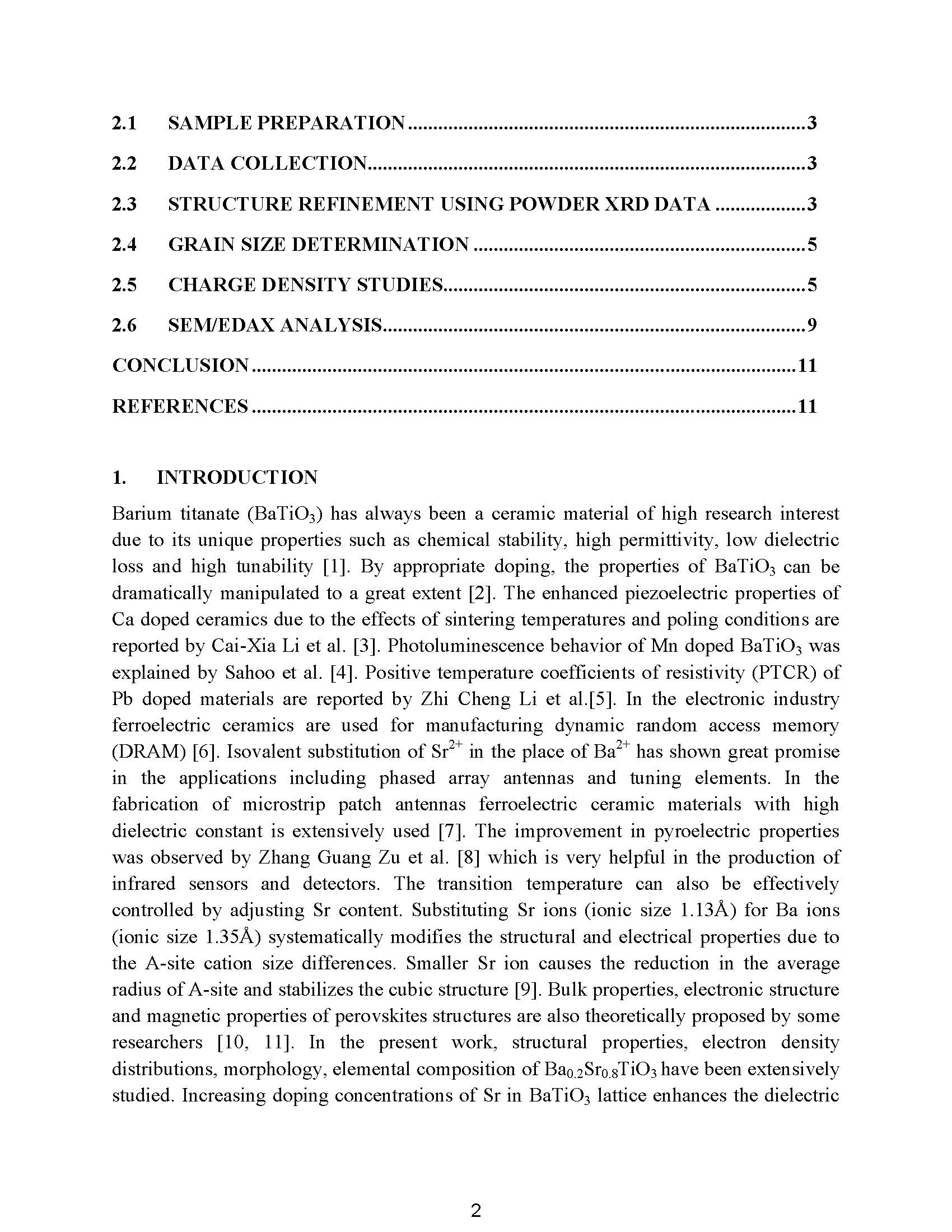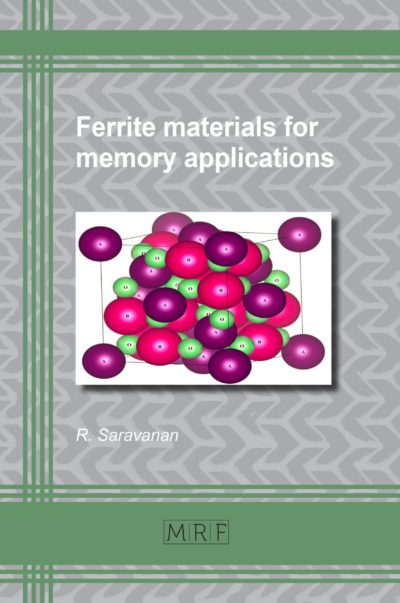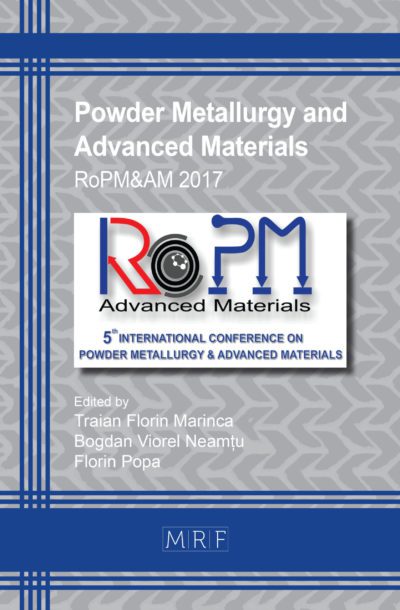Novel Ceramic Materials
edited by Dr. R. Saravanan
Materials Research Foundations Volume 2 (2016)
Print ISBN 978-1-945291-02-9
ePDF ISBN 978-1-945291-03-6
DOI: http://dx.doi.org/10.21741/9781945291036
The book presents a number of novel ceramic materials that have great potential for advanced technological applications, such as microwave devices, communication instruments and memory devices.
The materials covered include piezoelectric ceramics, zirconia ceramics, doped NiO ceramic nanostructures, BST ceramics (Barium-Strontium-Titanates), manganite ceramics, Ce-doped LaMnO3 and Sb-doped NKN (Sodium-Potassium-Niobates), as well as materials with ferrite structures, and with multi-ferroic structures
The materials were characterized experimentally by means of XRD (X-ray diffraction), SEM (Scanning electron microscopy), EDX (Energy Dispersive X-ray analysis), UV-Visible Spectroscopy, and VSM (Vibrating sample magnetometer). The results are discussed in terms of the structural characteristics of the various crystal structures, their special surface morphology, and their optical and magnetic properties.
Of particular interest is the determination of the electron density distribution (on the basis of XRD data and computerized evaluations). These data elucidate the atomic/electronic structure of the materials and make us understand the specific characteristics of these novel ceramics.
Keywords
Materials Science, Structural Characteristics, Piezoelectric Ceramics, Zirconia Ceramics, Doped NiO Ceramic Nanostructures, Novel Ceramics, BST Ceramics (Barium-Strontium-Titanates), Manganite Ceramics, Ce-doped LaMnO3 and Sb-doped NKN (Sodium-Potassium-Niobates), Ferrite Structures Materials, Multi-Ferroic Structures Materials, XRD (X-ray diffraction), SEM (Scanning electron microscopy), EDX (Energy Dispersive X-ray analysis), UVVisible Spectroscopy, and VSM (Vibrating Sample Magnetometer), Rietveld Analysis, Surface Morphology, Optical Properties, Magnetic Properties, Electron Density Distribution, Novel Ceramic Materials
Individual Chapters for Sale
Chapter 1 Chemical Bonding and Charge Density Imaging in Ba0.2Sr0.8TiO3 Ceramics by Iterative Entropy Maximization
Chapter 2 Synthesis, Characterization and Charge Density Analysis of Lead Free Piezoceramics Na1-xKxNbO3
Chapter 3 Inter Bond Experimental Electron Density in Magnesium Ferrite Ceramic (MgFe2O4) Through XRD
Chapter 4 Effects of Cations Substitution on Structural and Magnetic Properties of LaCrO3 Ceramic Perovskites
Chapter 5 Ferroelectric Charge Ordering in BaTi0.9Zr0.1O3 Lead-Free Ceramics through Powder X-Ray Diffraction
Chapter 6 Electronic Bonding Analysis on Dilute Doping of Iron in Nickel Oxide Nano Crystals
Chapter 7 Synthesis and Characterization of Al2TiO5-TiO2-Al2O3 Ceramics: Correlation with Charge Density
Chapter 8 Electronic Charge Density Distributions in Sb2O3
Chapter 9 Charge Density of Al Doped Lanthanum Orthoferrites
Chapter 10 Charge Density Distribution and Bonding in Calcite
Chapter 11 Synthesis and Characterization of NiFe2O4 Nano Particles Prepared by the Chemical Reaction Method
Chapter 12 Structural and Optical Properties of Li Doped Zirconia Nanoparticles
Chapter 13 Synthesis, Structure and Magnetic Behavior of Ce-Doped Lanthanum Manganite Ceramics
Chapter 14 Synthesis and Charge Density Analysis of BaTiO3
Chapter 15 Synthesis and Structural Characterizations of Na1-xKxNb0.95Sb0.05O3
ProtoView by Ringgold Clean Data
Physicists experimentally determine properties of some novel ceramic materials being developed for such applications as microwave devices, communication equipment, and memory devices. Their topics include chemical bonding and charge density imaging in Bao.2Sr0.8TiO3 ceramics by iterative entropy maximization, electronic bonding analysis on the dilute doping of iron in nickel oxide nanocrystals, the charge density of aluminum-doped lanthanum orthoferrites, structural and optical properties of lithium-doped zirconia nanoparticles, and synthesis and charge density analysis of BaTiO3. Annotation ©2017 Ringgold Inc. Portland, OR (protoview.com)
Ringgold Keywords
Ceramic materials, Novel ceramics, Analyzing properties, Electronics, Physics

